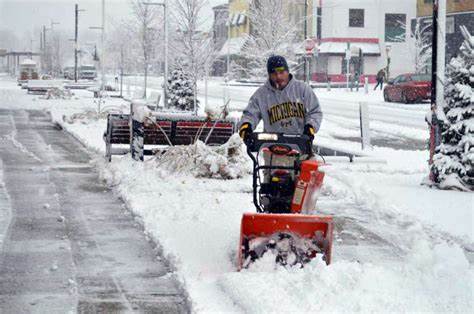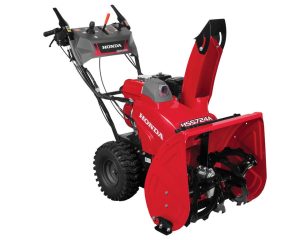7 Most Likely Causes of a Gasless Snowblower (FIND & FIX)
After turning the key, your snow thrower may not start or may operate slowly once it does. This could indicate that the engine is running on empty.
Due to a fuel limitation or faulty fuel component, the snow thrower is unable to receive gasoline. Possible causes include stale fuel, a kinked or clogged fuel line, a broken fuel pump, a dirty carburetor, or a loose gas cap.
Be sure you have adequate ventilation before attempting any repairs on your snow thrower. Safely disconnect the spark plug wire by following the instructions in your user handbook.
Table of Contents
Reasons Your Snowblower Isn’t Getting Fuel
Using Outdated Snowblower Fuel
Before you start clearing snow, make sure your snowblower is properly fueled. If your snowblower is having trouble acquiring gas, you may be using old gasoline.
To prevent further fuel limitation after you’ve fixed your fuel flow problem, you should always use new gasoline.
Ethanol, a fuel derived from plants, is now commonly added to gasoline in an effort to reduce the fuel industry’s negative impact on the environment. Moisture in the air combines with the ethanol in the gasoline and causes varnish to form and fuel components to deteriorate.
It’s not just crucial to utilize the appropriate kind of fuel, but also necessary to consume the fuel within this time range, as gas can break down in as little as 30 days after purchase.
Utilize unleaded petrol with an octane value of 87 or higher and no more than 10% ethanol.
It’s possible to come across 2-cycle engines, even though 4-cycle engines are the norm for snow blowers presently. Fuel requirements vary between 2-cycle and 4-cycle snow blowers.
- Gasoline and high-quality 2-cycle engine oil are needed to power a 2-cycle snow thrower’s engine in an air cooler. The ratio of gas to oil in the mixture is 40:1.
- Straight gasoline is needed for 4-cycle snow blowers. With these motors, you should never combine gas and oil. The oil for the engine will be able to be refilled through its own specific opening.
The problem can be solved by using a siphon pump to remove the stale gas from the tank. Gather the petrol in a fuel container that has been approved for recycling.
To stabilize the fuel, decrease moisture, and clean the fuel system, you should add new fuel and a fuel additive. In a snow blower, I prefer to use Sea Foam Motor Treatment.
The benefits of using Sea Foam in a snow blower are discussed in greater detail here.
Your Snowblower’s Fuel Valve Is Closed
You can perhaps find a fuel shutoff valve near the base of your snow thrower’s fuel tank. While putting away or transporting a snowblower, this valve is typically used to cut the fuel supply.
If your snow thrower has a fuel shutoff valve, make sure it is open so that gas may escape.
Your Snowblower’s Fuel Filter Is Clogged
In order to protect the engine from dirt and other debris that could be sucked into the fuel system, a fuel filter is added. This filter can become so clogged with debris that it prevents fuel from flowing through it.
Either a filter in the fuel line leading from the tank to the engine or an inline filter in the fuel lines themselves may have been fitted.
Fix it by installing a new fuel filter.
Snowblower’s Fuel Line Is Clogged
When fuel lines get clogged with gummy deposits from using old fuel, it reduces the amount of fuel that can flow through them.
Stopping and starting your fuel flow at various points along the fuel line is an useful way to check for good flow and locate a blockage in the fuel line.
At the very bottom of the gas tank is a fuel shut-off valve that allows you to regulate fuel flow. Pinch pliers can be used to clamp the fuel line and halt the flow of gas if your snow thrower doesn’t have a shut-off valve.
Put the fuel collection hose’s end in a suitable container. Start the gasoline pump and keep an eye on the fuel level gauge.
After locating the blocked piece of the fuel line, the solution is to disconnect the line from the snow blower and turn off the gasoline supply.
If the line becomes clogged, you can try spraying carburetor cleaner into it. Remove the line by blasting it with compressed air. It will take multiple attempts to clear the blockage.
It’s time to substitute your fuel line if you’ve tried to clear the line and failed or if the line is dry and cracked.
Your Snowblower Has a Faulty Fuel Pump
Since the snow thrower’s carburetor is elevated above the fuel tank, a vacuum fuel pump is required. The crankcase serves as the pressure source for this pump. Because gasoline can’t flow upward, this component transports gas to the carburetor.
If the gasoline pump develops cracks or stops functioning properly, you will need to get a new one. If there are no visible leaks or cracks, you’ll need to do some troubleshooting to figure out what’s wrong with your fuel pump.
SOLUTION: Make sure fuel is getting to the fuel pump before inspecting the pump itself. This phase may have already been finished if you made sure there were no obstructions in your fuel lines, but if you didn’t, it’s time to begin.
Put a halt to the fuel supply. Take the gasoline line off the fuel pump’s input. Restart your fuel flow by placing the line in a container that is lower than the fuel tank.
If fuel is moving from the line into the storage tank, then flow is confirmed. If not, then you may have a clog in your gasoline lines or fuel filter, both of which need to be investigated.
After checking that fuel is reaching the pump, reconnect the fuel line to the inlet. The fuel line should be disconnected from the carburetor and stored in a safe place.
Start the gasoline flow and the snow blower to ensure the pump is running properly. From the fuel line, there should be a constant or pulsating flow of fuel.
If not, the fuel pump will need to be replaced.
Your Snowblower’s Carburetor Is Filthy
Carburetors are used to control the ratio of fuel to air in an internal combustion engine. If the carburetor is malfunctioning, the engine may not obtain enough fuel to run.
It is possible that a blockage in the fuel line or a jammed float and needle are to blame for your snow thrower’s performance issues.
To fix this, disassemble your carburetor and use carburetor cleaner to get rid of the residue that old gas has left behind.
If you uncover broken parts or if your carburetor still doesn’t work after you’ve cleaned it, you may need to rebuild or substitute it.
Your Snowblower Has a Leaky Gas Cap
After gasoline is used up, air must be able to enter the tank through a vent. A vacuum will develop if this vent becomes blocked and stops functioning.
It is the vacuum created by this that prevents fuel from escaping the tank and entering the carburetor.
Most snow throwers have a vent integrated into the gas cap. To see if the fuel cap is clogged, you can start the snow thrower with and without the cap in place.
A blocked fuel cap may be the cause of an engine that starts and runs OK when the fuel cap is removed but dies or stalls out when the cap is reinstalled.
Fix: Substitute a new gasoline cap.







